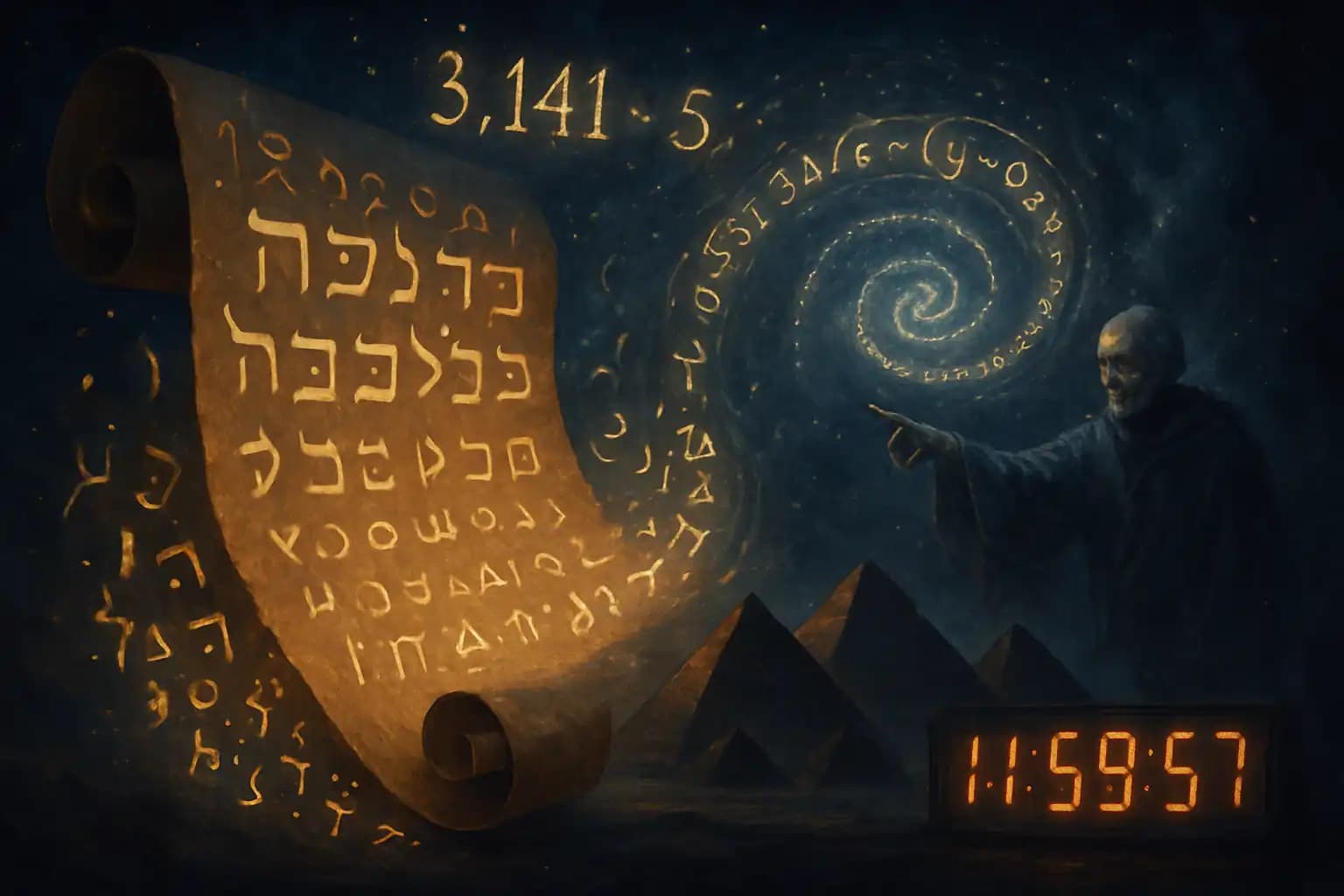Sometimes, the most encrypted message isn’t from a Top Secret terminal—but from texts in plain sight for millennia. Chuck Missler, a former aerospace engineer turned prophecy investigator, believed he had proof. He argued that our fate is encrypted within ancient texts, deciphered by those willing to chase mathematical ghosts through history. Quoting his infamous line, “The origin of this integrated message system comes from outside our time domain,” Missler leapt into the world of Bible codes, hidden number sequences, and extraterrestrial whispers. He died after making such claims, leaving a legacy debated within the skeptic/believer divide.
The notion that math can predict—or control—destiny isn’t limited to numerologists and codebreakers; even scientists explore similar ideas. From statistical prophecy like the doomsday argument, which predicts humanity’s probable extinction date based on population data, to sci-fi models and strong AI warnings, the data-driven end of the world is becoming mainstream. If you think governments disregard fate-by-formula, glance at contingency plans in grid-down survival guides reminiscent of emp survival plans or existential risk analyses like this AI alignment investigation.
Chuck Missler’s Code: Messages from Beyond?
Missler’s central thesis was explosive: ancient texts, including the Bible, contain messages of extraterrestrial origin, encrypted with complex mathematical codes. He popularized the Equidistant Letter Sequence (ELS) method, which extracts every N-th letter in the original Hebrew script to reveal names, events, or warnings. While the Bible code has been criticized by statisticians—who show that similar results emerge in any sizable book—it has inspired decades of cryptic analysis, bestselling paperbacks, and a digital prophet industry.
Missler’s supporters highlight examples like hidden references to modern disasters and unexplained clusters around dates that seem beyond random chance. Yet skeptics, including mainstream mathematicians, argue the high number of permutations guarantees some results will seem meaningful. For some, it’s signal; for others, it’s mere noise. While the scientific community is largely skeptical, Missler’s blend of cryptography, physics, and prophecy keeps his legacy alive, especially for those fascinated with lost transmissions or “alien artifacts,” like the Antarctic structures story.
The Mathematical Fate Equation: Can Numbers Foretell Doom?
If Missler’s theories touch on ancient codes, mainstream academics flirt with doom using cold equations. Consider the doomsday argument—developed by astrophysicist J. Richard Gott and others—asserting that you can mathematically predict humanity’s likely window of existence using current population data and probabilistic formulas. The controversy? This equation, explained in Vox’s report, links math directly to extinction events. Predictions oscillate from credible warnings about civilizational instability to ticking-clock theories that rival any reset scenario. Is it prophecy, paranoia, or just probability having a laugh at our expense?
Still, the desire to find order—whether in genetics, economics, or the patterns of megafloods and forgotten civilizations like those described in geological upheaval reports—is deeply human. Maybe, just maybe, it’s cosmic.
Alien Architects: Outside Our Time Domain?
Missler’s most provocative claim remains untested: these message systems originate from “outside our time domain,” indicating non-human or extraterrestrial intelligence infused our history with algorithms. The connection between these claims and persistent rumors about giant builders of ancient times or underground cities mapped in lost ages thrusts the discussion into the X-Files territory.
Are these codes genuine messages or merely our brains imposing meaning on chaos? Defenders argue that repeated patterns, cross-referenced with archaeological and modern discoveries, indicate something more. Critics warn of confirmation bias and the “look-elsewhere effect”—serendipity masquerading as the supernatural.
Clashing Narratives: Pattern Recognition or Cosmic Paranoia?
In the internet age, Missler’s codes permeate everything from apocalyptic TikTok trends to critical analyses of existential threats, paralleling the fate of tech whistleblowers or shadowy entities—chronicled in the tragic story of AI whistleblowers. Whether you’re a staunch believer in doomsday math or a skeptical observer, these narratives play a vital cultural role. They prompt us to question consensus, embrace the bizarre, and look for messages from beyond—whether etched on megalithic ruins, inscribed in ancient genomes, or concealed in the algorithms governing our modern world.
For more on cryptic prophecies, codes, and the limits of knowledge, keep watch on Unexplained.co—because the secrets of fate may not be random after all.




